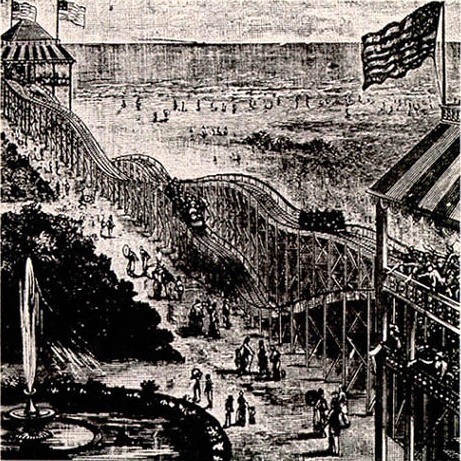4. America’s First Roller Coaster Wasn’t The Cyclone

Coney Island was home to the world’s first roller coaster, but it wasn’t the still-operating Cyclone as many might think. It was, in fact, a switchback railway that opened on June 16, 1884. It traveled at a speed of six miles per hour and cost five cents to ride. By the early 1900s, more technologically advanced rides developed and were all the rage among parkgoers. There was the Thunderbolt (1925), the Tornado (1926), and finally, the Cyclone (1927). According to Coney Island by John S. Berman, people waited in line for up to five hours for these rides, which only lasted a few minutes.
Another first for Coney Island was the first working escalator, installed in 1896. It was patented by Jesse W. Reno, who also designed an early aircraft carrier and a vehicle for salvaging shipwrecks, from his plans for a double-decker subway in New York City (which never carried through). This early escalator, which was known as an “incline elevator” and only ascended seven feet, was an attraction on Coney Island’s Old Iron Pier. It even had the same rubber handrails and “teeth” that modern escalators have. However, it only ran on Coney Island for two weeks, before it moved to a spot on the Brooklyn Bridge.





